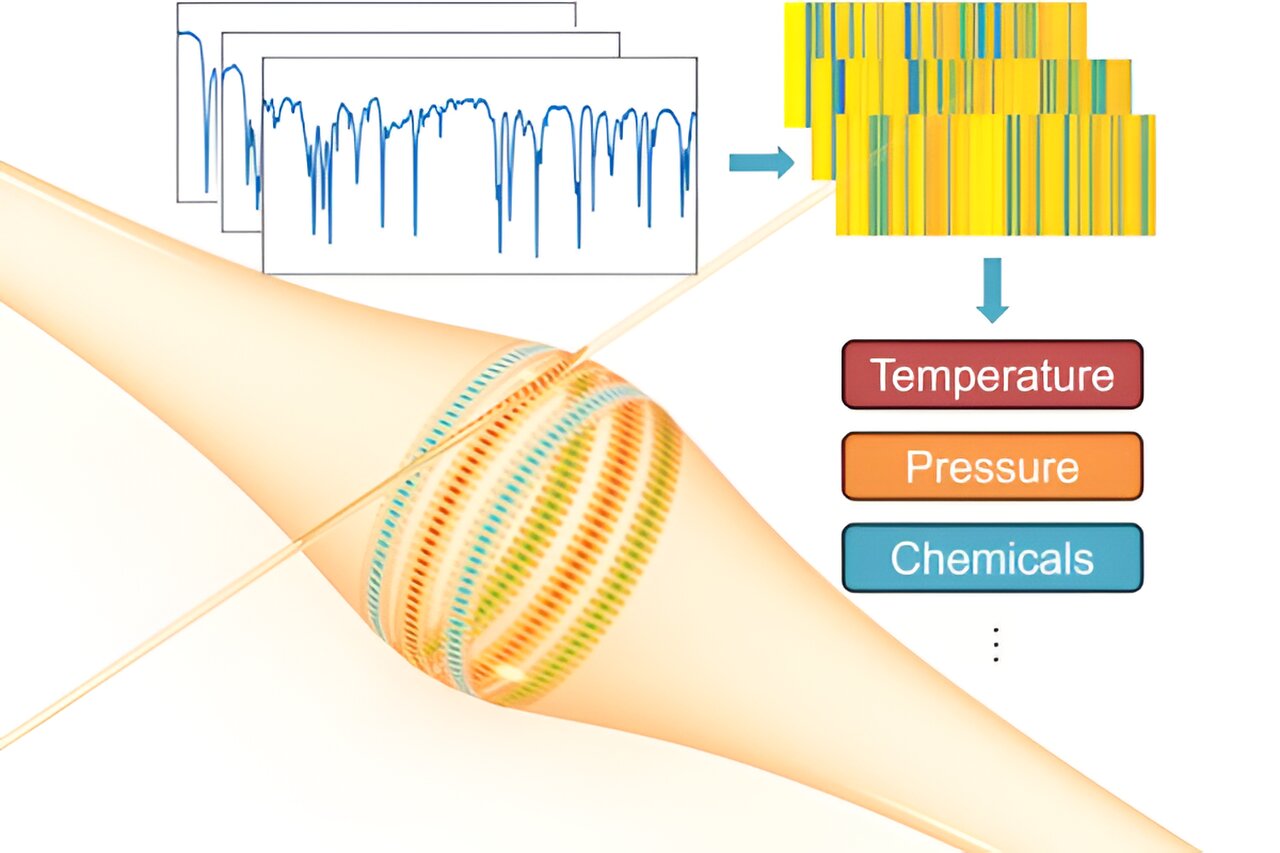× close
The same geometric quirk that lets visitors murmur messages around the circular dome of the whispering gallery at St. Paul’s Cathedral in London or across St. Louis Union Station’s whispering arch also enables the construction of high-resolution optical sensors. Whispering-gallery-mode (WGM) resonators have been used for decades to detect chemical signatures, DNA strands and even single molecules.
In the same way that the architecture of a whispering gallery bends and focuses sound waves, WGM microresonators confine and concentrate light in a tiny circular path. This enables WGM resonators to detect and quantify physical and biochemical characteristics, making them ideal for high-resolution sensing applications in fields such as biomedical diagnostics and environmental monitoring.
However, the broad use of WGM resonators has been limited by their narrow dynamic range as well as their limited resolution and accuracy.
In a recent study published in the journal IEEE Transactions on Instrumentation and Measurement, Lan Yang, the Edwin H. & Florence G. Skinner Professor, and Jie Liao, a postdoctoral research associate, both in the Preston M. Green Department of Electrical & Systems Engineering in the McKelvey School of Engineering at Washington University in St. Louis, demonstrate a transformative approach to overcome these limitations: optical WGM barcodes for multimode sensing.
Liao and Yang’s innovative technique allows simultaneous monitoring of multiple resonant modes within a single WGM resonator, considering distinctive responses from each mode, vastly expanding the range of measurements achievable.
WGM sensing uses a specific wavelelength of light that can circulate around the perimeter of the microresonator millions of times. When the sensor encounters a molecule, the resonant frequency of the circulating light shifts. Researchers can then measure that shift to detect and identify the presence of specific molecules.
“Multimode sensing allows us to pick up multiple resonance changes in wavelength, rather than just one,” Liao explained. “With multiple modes, we can expand optical WGM sensing to a greater range of wavelengths, achieve greater resolution and accuracy, and ultimately sense more particles.”
Liao and Yang found the theoretical limit of WGM detection and used it to estimate the sensing capabilities of a multimode system. They compared conventional single-mode with multimode sensing and determined that while single-mode sensing is limited to very narrow range—about 20 picometers (pm), constrained by the laser hardware—the range for multimode sensing is potentially limitless using the same setup.
“More resonance means more information,” Liao said. “We derived a theoretically infinite range, though we’re practically limited by the sensing apparatus. In this study, the experimental limit we found was about 350 times larger with the new method than the conventional method for WGM sensing.”
Commercial applications of multimode WGM sensing could include biomedical, chemical and environmental uses, Yang said. In biomedical applications, for instance, researchers could detect subtle changes in molecular interactions with unprecedented sensitivity to improve disease diagnosis and drug discovery.
In environmental monitoring, with the capability to detect minute changes in environmental parameters such as temperature and pressure, multimode sensing could enable early warning systems for natural disasters or facilitate monitoring pollution levels in air and water.
This new technology also enables continuous monitoring of chemical reactions, as demonstrated in the recent experiments conducted by Yang’s group. This capability holds promise for real-time analysis and control of chemical processes, offering potential applications in fields such as pharmaceuticals, materials science, and the food industry.
“WGM resonators’ ultrahigh sensitivity lets us detect single particles and ions, but the potential of this powerful technology has not been fully utilized because we can’t use this ultrasensitive sensor directly to measure a complete unknown,” Liao added.
“Multimode sensing enables that look into the unknown. By expanding our dynamic range to look at millions of particles, we can take on more ambitious projects and solve real-world problems.”
More information:
Jie Liao et al, Multimode Sensing by Optical Whispering-gallery-mode Barcodes: A New Route to Expand Dynamic Range for High-resolution Measurement, IEEE Transactions on Instrumentation and Measurement (2024). DOI: 10.1109/TIM.2024.3352712
Journal information:
IEEE Transactions on Instrumentation and Measurement

Dr. Thomas Hughes is a UK-based scientist and science communicator who makes complex topics accessible to readers. His articles explore breakthroughs in various scientific disciplines, from space exploration to cutting-edge research.








